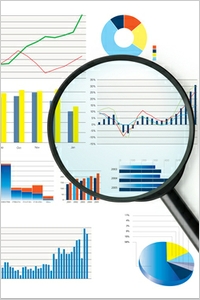Performance Measures – Part 1: There are three key activities that need to occur when identifying a performance measure/KPIs:
The measure needs to be clearly described (and based on an objective)
The measure needs to be rated in terms of importance
The measure needs to be calculated and ownership assigned
Over the next three weeks we will tackle each of these in turn, so number 1:
The measure needs to be clearly described – in the early stages of development it does not matter if lots of words are used to describe a performance measure. Later on the short measure ‘label’ can be created for convenience. Initially it needs to have a very clear description and therefore will end up as a statement or short sentence. The starting point, as described in a previous blog, is always an Objective. For the purpose of example we will use “Reduce the number of days to convert a qualified lead into a sale”.
Next, focus on the ‘physically perceived’ part of the objective, this will give you a clue as to the ‘tangible’ things you need to measure. In the example above “Reduce the number of days to convert a qualified lead into a sale” the tangible items are ‘days’ and ‘qualified leads’ and ‘sales’. These are the things that can be measured and will be included in the final performance measure. At a later point you can include descriptions for each of the ‘tangible’ items.
At this point we should consider ‘lead’ and ‘lag’ performance measures. Even a cursory study of the principles of business performance management will show that all too often our performance measures concentrate on ‘lag’ measures. That is, those measures that occur after the event. Nearly all of the financial measures fall into this category e.g. revenue, gross margin, profit, costs. It is important to measure these things but unfortunately the act of measurement does not cause change. Why do we concentrate on lag measures? Simply because they are easy to count and provide proof of success or failure. If I get on the scales they tell me whether or not I have lost or gained weight. If my objective is to lose weight, getting on the scales has not helped. However, if I measure how many times I go for a run and how much I have eaten (and plan for this) then I have put in place two ‘lead’ measures that will help me succeed. Lead measures are harder to identify but they are the only measures that can be influenced and therefore make a difference.
We must not underestimate the importance of lead measures when identifying our performance measures. It may take a little longer to identify these measures but it is worth the effort in the long run. Even if they are discarded they may provide additional insight into the way a business is being run.
The final quality of a typical lead measure is that it may not hold a guarantee of success. In the following example:
‘The number of sales people trained in selling our product portfolio to grade III certification’
We may believe that this will have a positive impact on an objective to increase sales because common sense dictates that trained people will perform better than untrained people but we will only have the proof when we see a positive change in the other measures.
The tangible parts of the objective need to be written into a performance measure that describes something that can actually be counted and of course relates back to the objective. For example with the objective:
- Reduce the number of days to convert a qualified lead into a sale
The performance measures could be:
- The average number of days between a qualified lead and a sale
or
- The average number of days between qualified leads and sales that result in an order value greater than £250k
or
- The percentage of sales generated within 30 days of lead qualification
or
- The number of sales people trained in selling our product portfolio to grade III certification (note this is a ‘lead’ measure)
As can be seen from the above, each performance measure is relevant to the objective but is measuring it in a slightly different way. Also, we can see that the type of measure has been added, in the cases above ‘average’ and ‘percentage’. Furthermore we can see that a calculation is beginning to form, the performance measure calculation is a very important part of the identification as it provides the scientific/objective basis for its accuracy.
For now, let’s concentrate on the description, the key things to remember are;
- Write the description in the form of a sentence
- Include the ‘tangible’ words, the things that can be counted
- Don’t immediately think you have ‘got it covered’ with an existing measure
Part 2 will concentrate on rating measures in terms of importance to the business.


